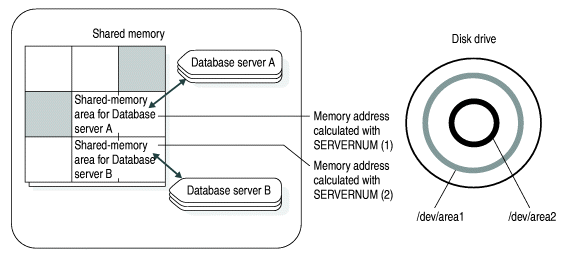
To maintain separation among the instances of database servers, you maintain multiple configuration files, each with a unique SERVERNUM value. When you initialize the database server, it reads the ONCONFIG environment variable for the name of its configuration file. Next, the database server reads its configuration file to obtain the value of its SERVERNUM configuration parameter. The database server then uses the SERVERNUM value to calculate the required shared-memory address.
For example, the ONCONFIG files for two database servers on a UNIX platform might include these parameters.
| ONCONFIG file: onconfig.one | ONCONFIG file: onconfig.two | ||
| ... DBSERVERNAME dbsrvr_one SERVERNUM 1 ROOTPATH /dev/area1 ... | ... DBSERVERNAME dbsrvr_two SERVERNUM 2 ROOTPATH /dev/area2 ... | ||
Figure 21 uses the configuration files shown in the preceding table to provide an example of multiple residency. Each database server has its own name, its own section of shared memory, and its own storage area on disk.
